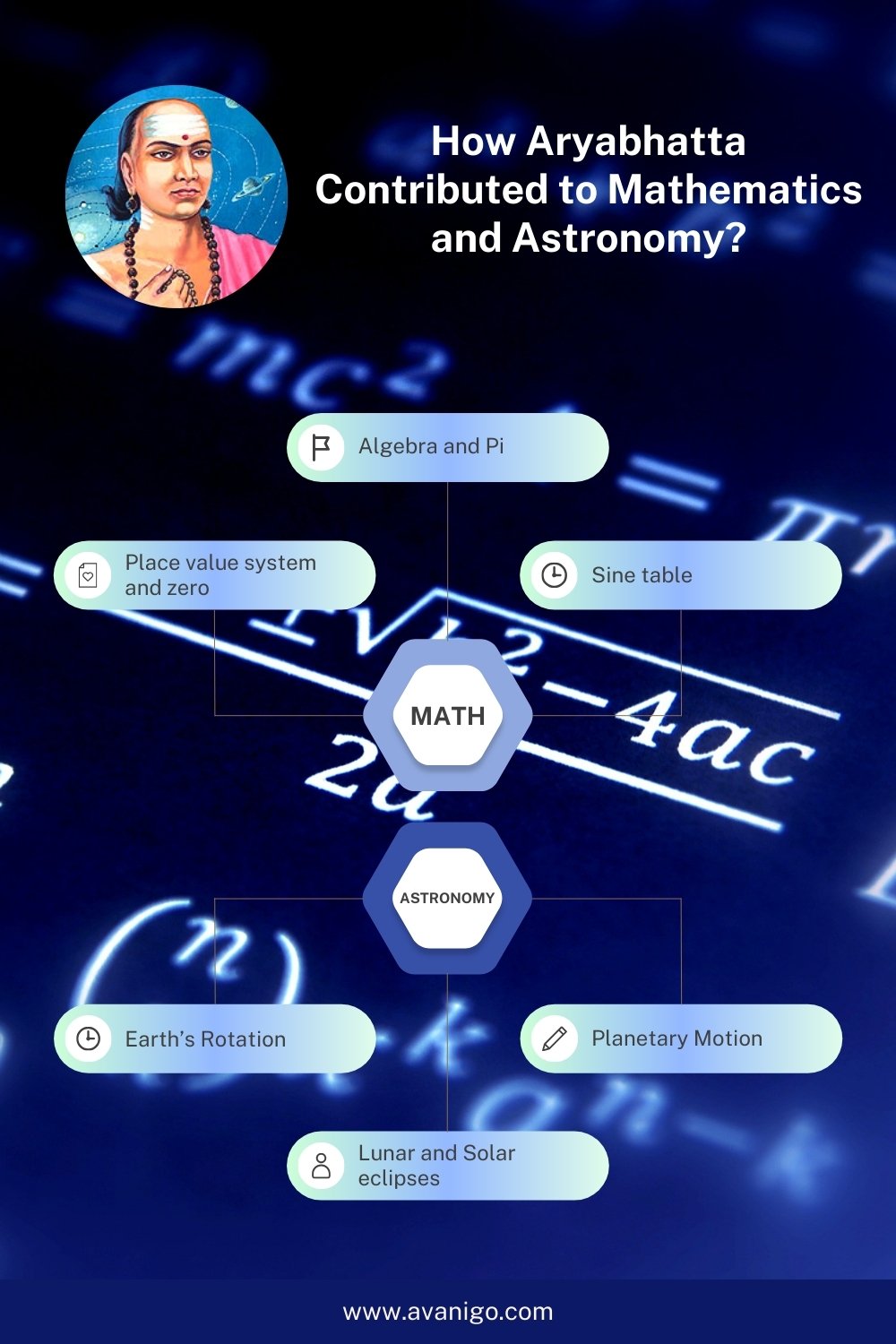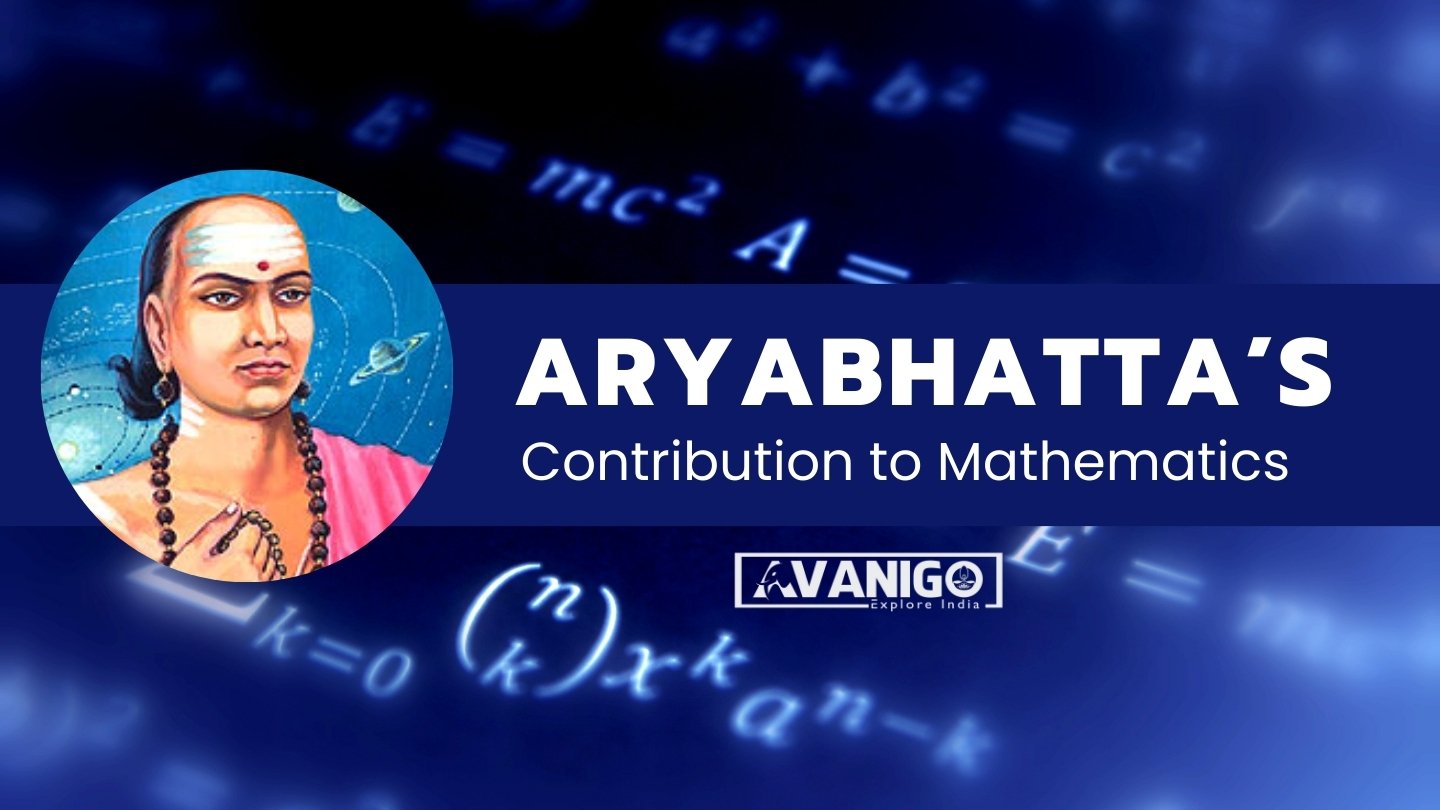Have you ever wondered how Indian mathematics developed its foundational principles? Who were the early pioneers who helped lay down the foundations for what today’s math is based on? Among these early pioneers is one that stands out as he was a radical mathematician and astronomer pushing India into the avant-garde of scientific discoveries – Aryabhatta. Aryabhatta, born in 476 CE in Patliputra, modern-day Patna, Bihar, was a great thinker whose significant works contributed significantly to math and astrometry.
Quick Navigation
Aryabhatta’s Childhood
Everybody knows about the contribution of Aryabhatta in mathematics. He was not only a brilliant mathematician but also a person deeply curious about cosmology. However, someone less familiar with his work in those fields might wish to ask for his background.
- He lived when a powerful kingdom called the Gupta Empire ruled North India. This period was a helpful time to flourish and work in different areas.
- Aryabhatta went to India’s most famous ancient university near Patliputra, the celebrated Nalanda University. Many famous mathematicians and astrologists came and claimed this university to be the oldest university in the world, among many universities.
- His initial production Aryabhatiya was complied by Aryabhatta at a mere age of twenty-three years and was subsequently published following his demise. This was an outstanding achievement because he presented different theories about motion for celestial bodies within one work.
Understanding Aryabhatta’s Philosophy
Before appreciating Aryabhatta’s genius, we must first comprehend the Hindu philosophy in ancient India or Bharat. The dominant philosophies then, like Samkhya or Yoga, which started long before, together with early Vedic traditions like Rigorous logical reasoning, were deeply encouraged by them and rigorous scientific inquiry.
Aryabhatta imbibed these principles of inductive and deductive logic from a young age. His early education in Kusumapura, a renowned seat of learning, further nurtured his analytical mind.
Key to Aryabhatta’s approach was interpreting natural phenomena through mathematical concepts and quantification. This aligned with the Hindu philosophy of exploring the unity between nature, mathematics, and divinity. Armed with this educational foundation, Aryabhatta began his journey of discoveries.
Ratan Tata: The Humble Industry Titan of India
Aryabhatta’s Contribution to Mathematics
Aryabhatta’s most influential work in mathematics was through his famous book Aryabhatiya. In this book, he introduced several groundbreaking concepts:
Place Value System and Zero:
Before Aryabhatta, numerical systems were cumbersome without the concept of place value.
- Numbers like 100 were represented through 100 small dashes or units, which made calculations complex.
- In Aryabhatiya, he introduced our unique decimal number system, which increases each place’s value tenfold from right to left.
- Even more innovative was his introduction of zero as a placeholder. Now, numbers like 100 could be written as “1 hundred, 0 tens, 0 units”.
This simple yet ingenious system revolutionized arithmetic and algebra.
Algebra:
Aryabhatta established basic algebraic rules, methods, and place value notation.
- He introduced unknown quantities in problems, which he represented using the letter ‘ksap’.
- He showed how arithmetic operations could be performed on expressions containing unknowns.
- Through simple but straightforward examples, he laid the foundation for solving more complex equations – the starting point of modern algebra.
Pi:
Aryabhatta calculated pi in four decimal places, which was unprecedentedly accurate.
- Pi relates to the circumference of circles and is essential in areas like geometry and trigonometry.
- By determining pi more precisely, Aryabhatta enabled geometrical calculations to be performed with higher accuracy.
- His work showed the deep interconnection between mathematics and the real world.
Sine Table:
To solve astronomical problems, Aryabhatta compiled trigonometric sine values in a table.
- This allowed quick lookups of unknown angles and sides of triangles, which come up frequently in areas like land surveying and engineering.
- His straightforward methodical approach set precedents followed by later mathematicians.
Aryabhatta is also credited as one of the earliest proponents of integral calculus, who described the concept of antiderivatives through his table of sines. Beyond establishing fundamental algebraic formulae, Aryabhatta presented them through a novel system of verbal sutras, which made math more accessible to remember and study. The clear structure and organization he brought made mathematics widely accessible.

Aryabhatta’s Contribution to Astronomy
Aryabhatta’s talent extended beyond mathematics into the celestial realm as well. Through disciplined observation and precise calculations, he arrived at explanations that were well ahead of their time:
Earth’s Rotation:
- When geocentric models dominated, Aryabhatta accurately proposed that the Earth rotates about its axis daily.
- This correctly explained natural phenomena like sunrise, sunset, and the changing positions of stars.
- His bold hypothesis flew against prevailing thought but aligned with the Hindu worldview.
Lunar Eclipse:
Aryabhatta painstakingly studied the moon’s orbit and shadow movements.
- In Aryabhatiya, he provided a rational theory for lunar eclipses, citing how the moon passes through the Earth’s shadow during such events.
- This demonstrated his keen intellect and principle-driven approach.
Solar Eclipse:
Likewise for solar eclipses:
- Aryabhatta observed and reasonably illustrated that the moon temporarily blocks sunlight from reaching parts of Earth during its alignment between the Earth and the sun.
- His precise descriptions laid a foundation for predictive astronomy.
Planetary Motion:
Ahead of the Western world, Aryabhatta proposed that planets move in elliptic orbits with the sun at one focal point, similar to ancient Hindu astronomical texts.
- He thus envisaged the proper arrangement of our solar system long before Galileo and Copernicus. It is a tribute to his profound grasp of theoretical astronomy.
- Through his groundbreaking works, Aryabhatta established India’s pre-eminence in cosmological matters.
Future scholars built on his works to unlock further celestial secrets according to the Indian epic tradition. Aryabhatta’s math intertwined with Vedic philosophy continues to illuminate from centuries past.
Related: Shakunatala Devi’s Contribution to Mathematics
Legacy of Aryabhatta
Aryabhatta’s pioneering results in mathematics and astronomy placed India on the global map of scientific discoveries for centuries. Prominent mathematicians like Brahmagupta and Bhaskara I built upon his theories, while Islamic scholars translated his works, spreading his ideas further.
In present times, the Indian government commemorates his contributions through naming institutions and the first satellite after him. As the original “Arya” or intellectual from India, Aryabhatta showed the infinite power of an innovative mind in advancing human understanding of the cosmos. He remains an eternal inspiration for all those who dare to challenge old notions with radical new ideas.
Reimagining Mathematics
Through his contribution to Mathematics, intellect and perennial works, Aryabhatta became the ‘Father of Indian Mathematics’. His novel approaches to equations of varying complexities, use of place-value numeral system, and astronomical models helped redefine the discipline for millennia.
By assimilating the logical Vedic tradition and applying quantitative rigor, the contribution of Aryabhatta in mathematics established the philosophy of India as an active driving force behind scientific inventions.
Most remarkably, he demonstrated how knowledge has no bounds if one retains an open and questioning mind. Aryabhatta continues to inspire generations to think beyond ordinary limits and reimagine the frontiers of mathematics.
Suggested Reading: Srinivasa Ramanujan’s Contribution to Mathematics
Swetha is a Content Specialist, LinkedIn Branding and B2B Marketing Consultant. When she is not in the world of B2B, she researches the roots and beauty of Indian Culture and Traditions. She is the author of the book: 365 Days 365 Posts – The Guide to LinkedIn Personal Branding, available exclusively on Amazon. Connect with her on LinkedIn.

